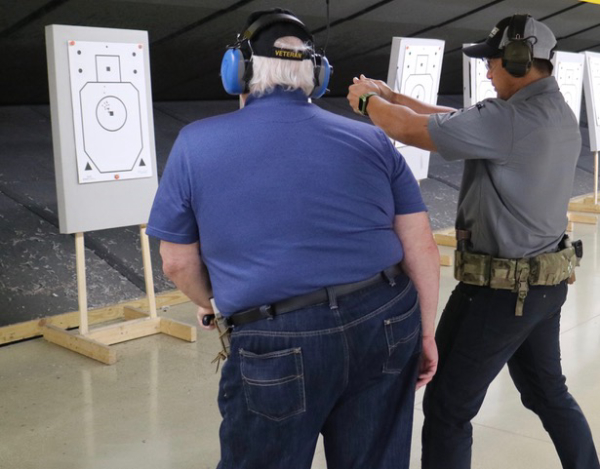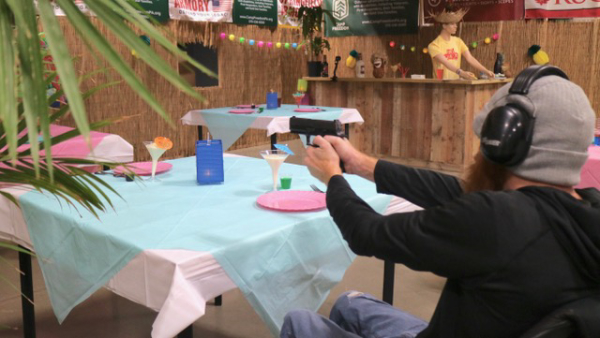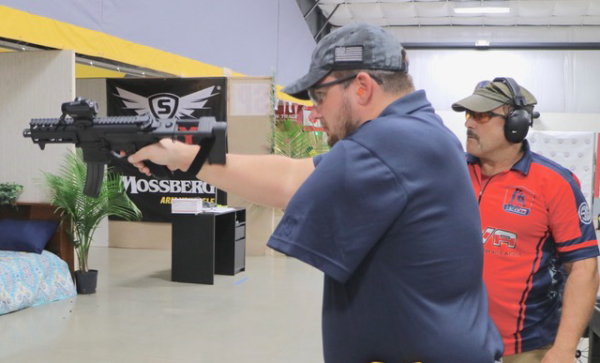How do you repay someone who willingly offered their life, then sacrificed limbs to keep you safe?
We can’t.
But it’s a question frequently asked as we look at the men and women who have been damaged during their service.
We can’t repay their sacrifice. Instead, we must look for ways to make those changed lives more normal.
For someone whose life has been dramatically changed by injury, being able to participate in things many of us take for granted can be a life-altering change.
It’s a lesson I’ve learned watching my friend Trevor Baucom advance as a competitive shooter.
Confined to a wheelchair after a helicopter crash, Baucom’s determination, personality and ability to put people at ease around him quickly turned him from a curiosity in shooting sports to an inspiring example of perseverance.
Trevor’s shown how to take the things you can do and use them as the lubrication to overcome life’s challenges. He’s turned his own situation into a test-bed to help make life better for others.
When he cornered me last year with an idea for a shooting competition especially for people with disabilities, I was intrigued. While I’ve learned more about how not to hold competitions that most, I agreed to help.
Trevor’s idea morphed into the Adaptive Defensive Shooting Summit held this past weekend at the SIG Academy in New Hampshire.


The group of shooters in this special competition were dealing with everything from losses to legs and arms to sight injuries that render them legally blind. Honestly, they looked pretty shaky during Friday’s instructional sessions.
Some were barely capable of doing things most of us take for granted. Anything from loading magazines to holstering handguns proved challenging for someone in the group.
But they didn’t quit.
Through a long Friday of training, they worked to determine what they could do- safely.
Both students and instructors were exhausted by the end of their training day.
On Saturday, the same group that seemed challenged by the most basic gun-handling skills didn’t just perform those administrative tasks, they competed.
Moving across eight stages of competition designed by Match Director Chad Barber they dealt with scenarios any of us might find ourselves facing, from carjacking at the airport to home and hotel invasions.
They didn’t all shoot “clean” stages. But they demonstrated their abilities to accurately put shots on targets.
That might sound like an anathema to most of us because we’re taught the best fight is one you never have. And that’s always the “best” answer.
If, however, you’re unable to run from dangerous situations, it’s a huge deal. Criminals aren’t looking for people who seem capable of defending themselves, they’re looking for easy pickings.
The ability to defend yourself is a life or death skill if you lack the ability to run away. And the confidence that you could is obvious to those looking for victims.
Viewed through those optics, everyone who competed was a winner.
And while it might embarrass them to hear it, they were inspirations to the rest of us.
Being told what you can’t do often enough crushes the spirit. It discourages trying to find ways to do the things you want to do, but lack the energy or knowledge to do without assistance.
Everyone in attendance left convinced we really haven’t done everything we could to accommodate everyone into shooting sports.
That’s why the world of physically challenged shooters contains a lot of “rigging” - holsters are “rigged” to wheelchairs, solutions are found to enable a shooter dependent on a cane to walk to draw and aim a gun safely- and still have their cane at hand.


This first Adaptive Shooting Summit made its point - adaptations can be made. And we need to all work to be making them. It might not be pretty in its first iterations, but we can make the tools necessary to allow the physically challenged to come to the line, load and make ready with the rest of us.
Instructors can teach that missing an arm doesn’t mean you can’t shoot -or compete. They can teach how to reload magazines, or rack pistol slides using holsters, wheel chair arms or tabletops. Learning those lessons means you can compete - and protect your families in an emergency.
That’s big.
As Rick Cicero told me, “it’s not about what we can’t do. It’s about helping other disabled shooters realize that we might do things differently from most people, but we can still do them.”
That sounds high-minded from most of us, but watching him enthusiastically wave his arms when teaching quickly reminds you that one of those arms is artificial. Like Trevor, he teaches and encourages from experience.
As I watched him run the competitors through their training day like an over-caffeinated drill Sargeant, I watched as attitudes changed. Instead of being embarrassed or quitting as they struggled with “simple things” for most of us, these students didn’t quit.
They adapted and overcame their challenges - to the best of their abilities.
And I began to realize that their scoring was different from mine. I look for “A” zone hits. They become winners the first time they draw a pistol and break an accurate shot.
It isn’t possible to repay the price they’ve paid for us, but it’s imperative to let them know we realize the debt- and want to include them in our activities.
Bringing them into our sport rather than treating them like broken toys is something they need. They want to belong again.
Belief in something larger than themselves is why they went into harm’s way.
This event, like those held by HAVA or Camp Freedom (more on that another time), Aiming for Zero and others like them are about a simple idea - inclusion.
An unexpected by-product is having the many blessings most of us don’t appreciate put into perspective.
If we look at our lives through their optics, we don’t have much to complain about, but plenty to be thankful for.
Inclusion works two ways - that’s why I’m looking forward to our Wires taking part in next year’s competition. I was welcomed into their world - and realize one accident or medical issue could make their world my world.
Learning how to navigate through physical challenges it isn’t just a part of us saying thank; to those already there- it’s part of prudent planning for the rest of us.
Everyone learned valuable lessons at this event.
—Jim Shepherd